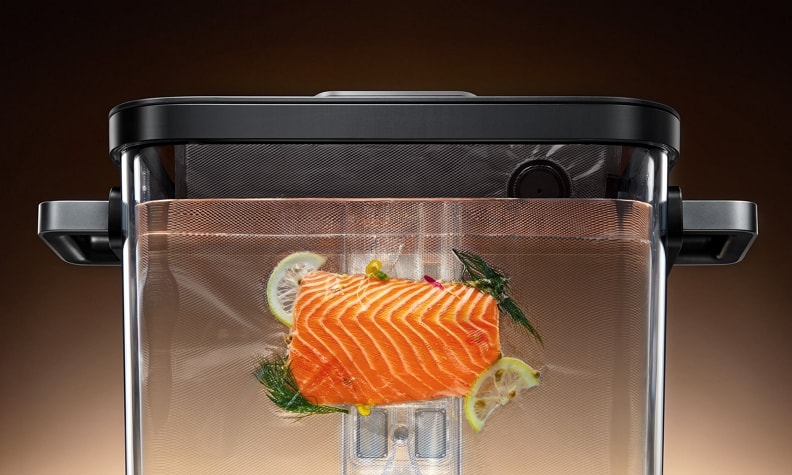
Sous vide cooking is one of those things you’ve probably heard of but might be a little intimidated by. It seems fancy, right? Expensive equipment, complicated processes, reserved for Michelin-star chefs, and so on. Well, here’s the thing about how to sous vide: it’s not nearly as intimidating or as difficult as it seems.
And, no, you don’t need to be a professional chef to get it right. In fact, mastering how to sous vide is a game-changer for anyone who loves to cook, making meal prep a breeze. From perfectly medium rare steak to restaurant-level lobster tail, the possibilities are endless.
So, without further ado, let’s check out how to sous vide.
Table of contents
What is Sous Vide?
Sous vide is a cooking technique that involves vacuum-sealing food in a bag and slow-cooking it in a water bath at precise temperatures. This low-temperature, long-time cooking technique is perfect for proteins like chicken and steak, as it guarantees consistent results, ensuring the meat is cooked to the perfect doneness every time.
For a long time, sous vide was a secret weapon of high-end chefs. However, as home cooks began demanding higher-quality meals, the use of sous vide in home kitchens has grown. Thanks to the availability of affordable and easy-to-use sous vide equipment, like the Typhur Sous Vide Station, it’s now accessible to everyone aiming for restaurant-quality results at home.
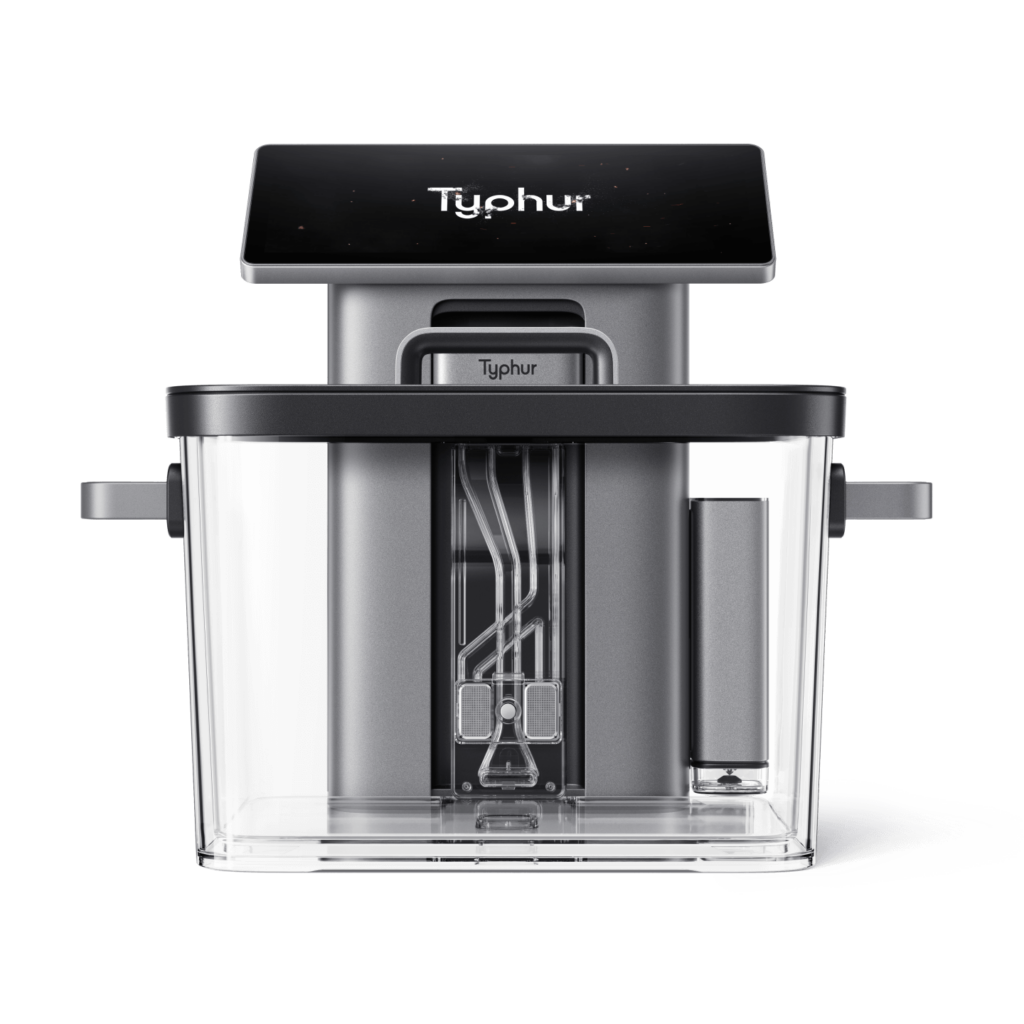
All-in-One Sous Vide Machine
Sous Vide Results
Now, you might be wondering, is sous vide really worth the hype? Let’s break down the cooking results.
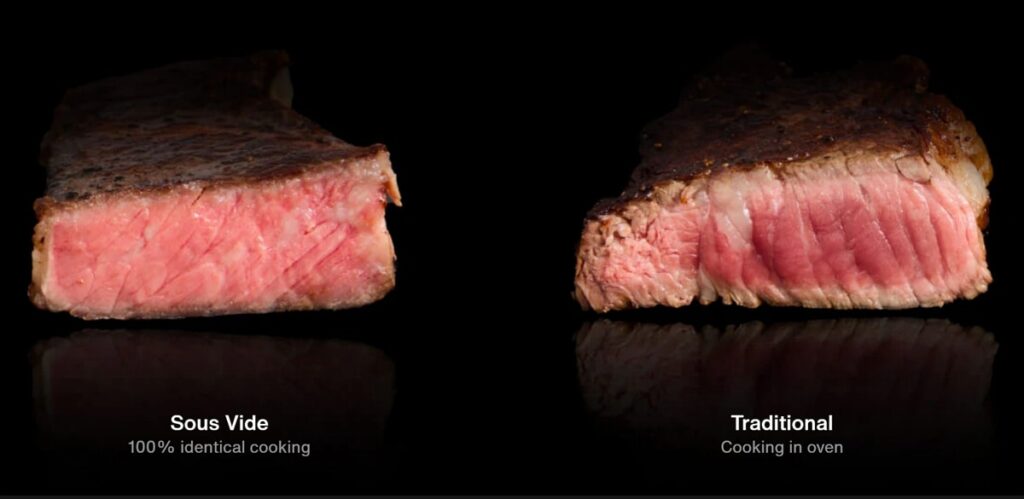
The steak on the left was cooked with Typhur Sous Vide Station at 130°F (54°C), while the steak on the right was cooked in the oven. As you can see from the comparison, sous vide offers significant advantages over traditional cooking methods.
Sous vide ensures the steak is evenly cooked from edge to edge, resulting in perfect doneness throughout. In contrast, oven-cooked steak often shows uneven cooking, with the outside overdone and the inside undercooked.
Best Sous Vide Equipment for Beginners
If you’re new to sous vide and feeling a bit overwhelmed, the Typhur Sous Vide Station has got you covered. It’s the world’s first all-in-one sous vide machine, eliminating the need for extra equipment. Everything is included, from the circulator tower to the vacuum bag, sous vide container, vacuum sealer, and even snap weights. Plus, it features built-in notches for hanging vacuum bags—no need for additional clamps!
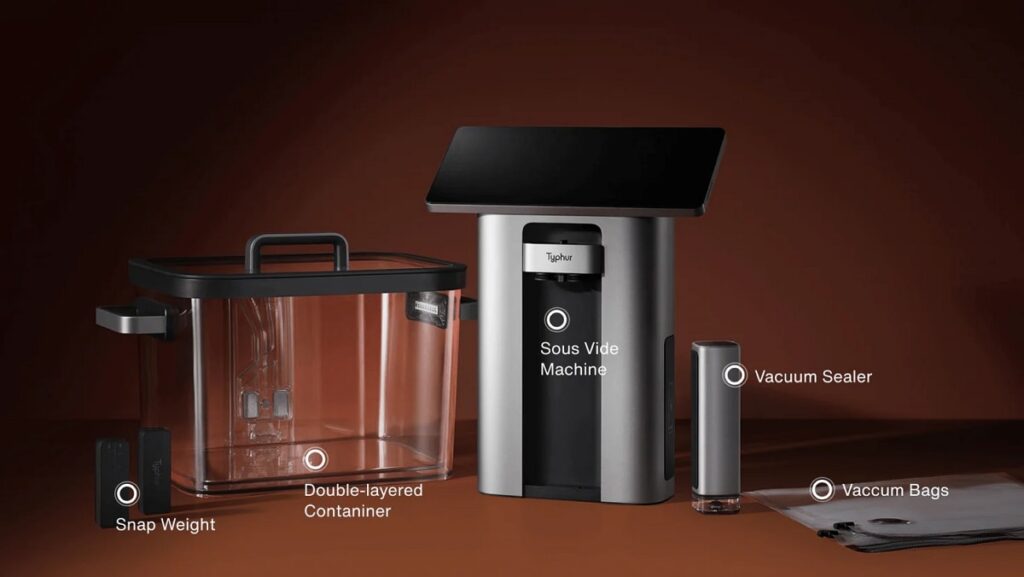
Operating the Typhur Sous Vide Station is also incredibly easy. Its user-friendly interface takes the guesswork out of sous vide cooking. For added convenience, you can download the accompanying app, which allows you to monitor your cooking from your phone remotely. No more constantly checking! The app is also packed with Michelin-level sous vide recipes, making it the perfect guide for beginners aiming for gourmet results.
The most advanced part is the schedule mode, which means you can cook your food ahead of time so it’s ready when you get home.
How To Sous Vide
Okay, you have the equipment, now let’s talk about putting it into practice.
1. Season Your Meat
The first step is proper seasoning. Rub your meat with plenty of salt, which helps to enhance the natural flavors and ensure a tender result. Apart from salt, you can add any dried spices or pastes you like—freshly ground black pepper, chile powder, curry, harissa paste, whatever you want. Sous vide cooking gives your spices and seasonings plenty of time to work their magic, sinking deep into the meat.
2. Bag It Up
Once your meat is perfectly seasoned, the next step is to put the meat into a food-grade vacuum sealing bag. But don’t just throw the meat in there by itself! Add some aromatics for an extra layer of flavor. This could be garlic cloves, fresh herbs like rosemary or thyme, or even a slice of lemon or orange for a bit of brightness.
But here’s a little secret: adding a tablespoon or two of butter to the bag makes a huge difference. The butter melts slowly as the meat cooks, coating it in a rich, buttery flavor that really enhances the overall taste. Plus, it helps the aromatics release their flavors even more. Make sure everything is spread evenly in the bag, and you’re all set for the next step.
3. Seal It
Now comes the important part: sealing the bag. A vacuum sealer is the easiest and most reliable option, and if you’re using something like the Typhur Sous Vide Station, you’re in luck—it comes with a vacuum sealer to make the process a breeze.
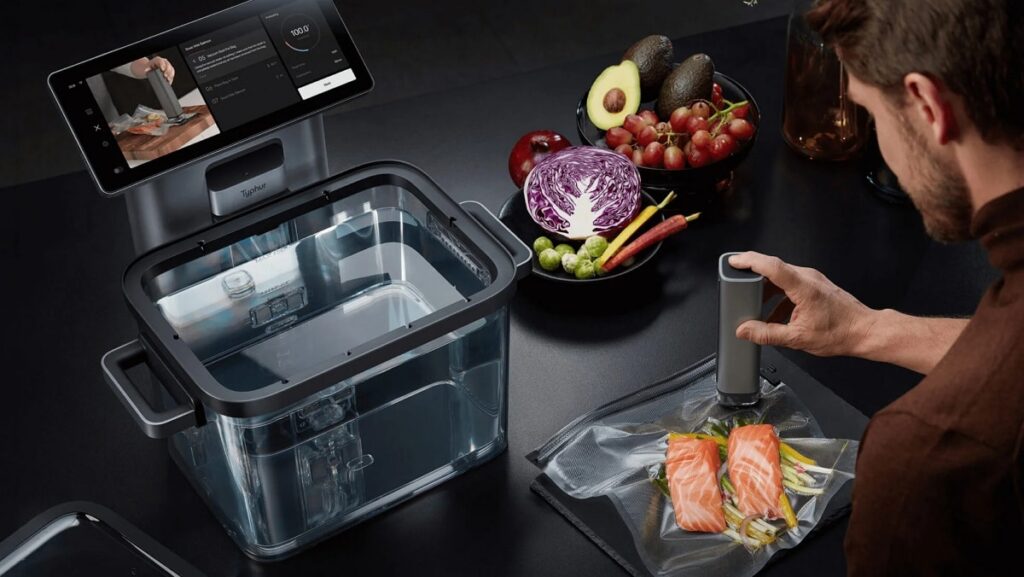
But if you don’t have a vacuum sealer, don’t worry. The water displacement method works just as well, and it’s something I picked up from reading Kenji’s The Food Lab. Here’s how Kenji explains it:
“To do it, start by placing your food inside a zipper-lock bag, then seal the bag, leaving just the last inch or so of the seal open. Next, lower the bag into a pot or tub of water. As the bag gets lowered, water pressure will push air out of the bag through the small opening you’ve left. Just before the bag is completely submerged, seal off that opening and pull the whole bag out of the tub.”
《The Food Lab: Better Home Cooking》
4. Set Temperature
Now it’s time to get cooking! Begin by filling a large pot with enough water to fully submerge your bagged food. Set the temperature and cooking time based on what you’re cooking—whether it’s a medium-rare steak, tender chicken, or delicate fish.
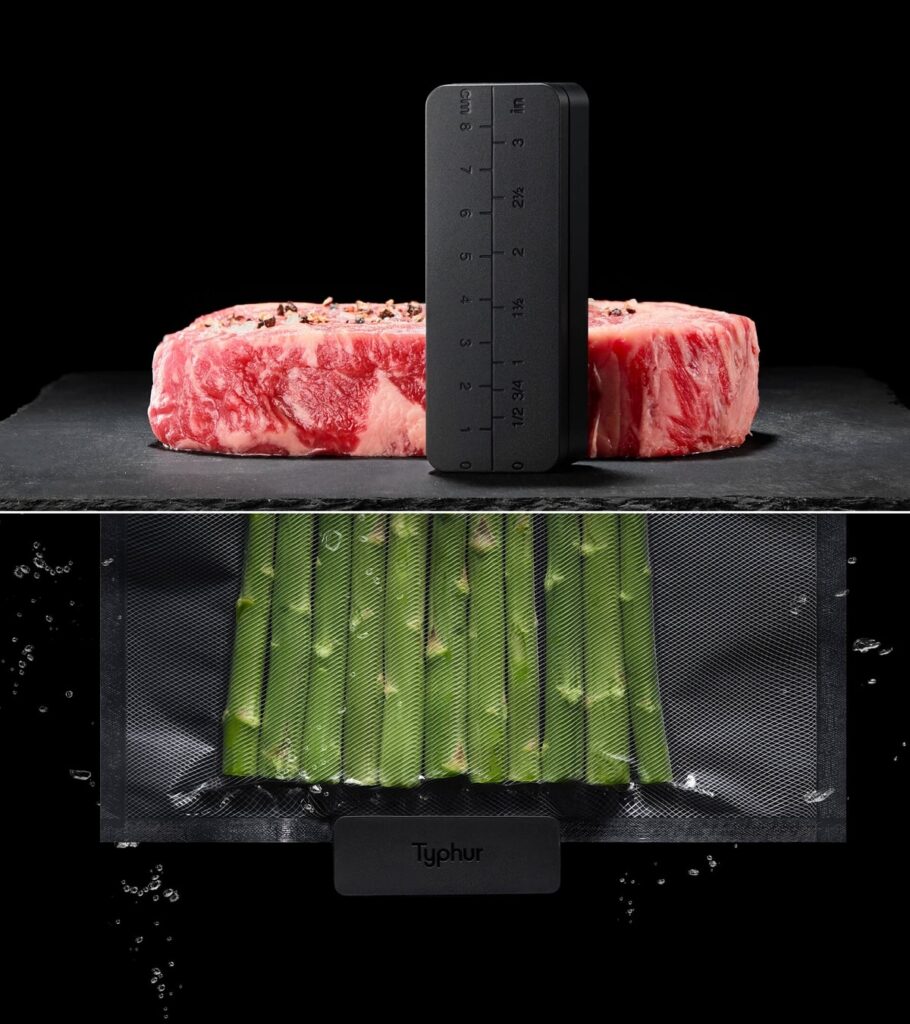
Note: It’s important to make sure the bag stays fully submerged in the water. But sometimes the bag might float due to trapped air or other reasons. So, how do you keep a floating bag down? That’s where the Typhur Sous Vide Station comes in handy with its Snap Weights. These weights double as a ruler for measuring the thickness of your meat and as a weighted clip to keep your bag submerged in the water.
Not sure what temperature or cooking time to set for your meat? No worries—the Typhur Sous Vide Station has more than 40 built-in, chef-tested sous vide recipes to guide you. This makes it super easy to start cooking like a pro, even if you’re new to sous vide. Just select a recipe, and the machine will handle the rest!
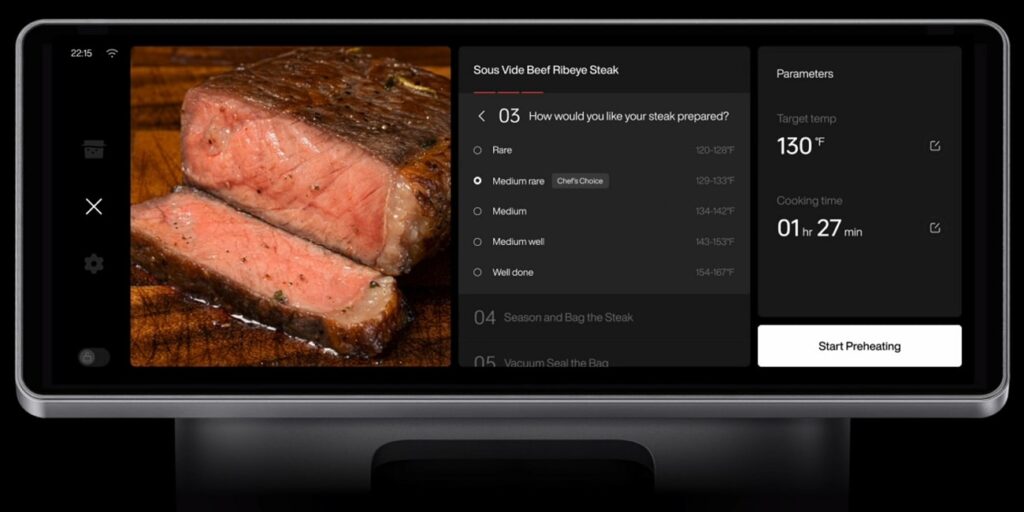
5. Rest, Dry, and Sear
Unlike traditional cooking methods, sous vide doesn’t require resting because the food is cooked to the same temperature from edge to center, meaning there’s no temperature gradient inside.
For some proteins, like boneless, skinless chicken breasts or a nice salmon fillet, they’re good to go straight from the sous vide—just slice, plate, and enjoy.
But with other proteins, like a medium-rare steak or pork chops, you’ll want to finish with a quick sear to get that crispy, golden exterior. In those cases, just pull the meat out of the bag, pat it dry with some paper towels, and toss it in a hot pan for a minute or two on each side. The goal is just to get a nice crust since it’s already perfectly cooked on the inside. Super easy and so worth it!
Basic Sous Vide Temperature and Time
Now that you have understood the process of how to sous vide, here comes the next crucial part, setting the temperature and timings. With different types of meats and cuts, you need to set up different temperatures and timing for it.
Below, you can check out the basic recommended temperature settings chart.
| Meat Type | Rare | Med. Rare | Medium | Med. Well | Well Done |
| Beef, Veal, and Lamb. | 120-130°F (49-54°C) | 131-135°F (55-57°C) | 136-145°F (58-63°C) | 146-155°F (64-68°C) | 156°F and up (69°C and up) |
| Pork Roasts, Steaks, and Chops) | Not Recommended | Not Recommended | 143-147°F (62-64°C) | 148-152°F (65-67°C) | 153°F and up (68°C and up) |
| Brisket, Pork butt & Ribs | Not Recommended | Not Recommended | Not Recommended | Not Recommended | 190-205°F (88-96°C) |
| Salmon and Other Fatty Fishes | Not Recommended | 115°F (46°C) | 125°F (52°C) | 135°F (57°C) | 145°F (63°C) |
| Sea Bass & Other Lean Fishes | Not Recommended | 125°F (52°C) | 130°F (54°C) | 135°F (57°C) | 140°F (60°C) |
It is important to mention here that the above temperature ranges are chef-recommended and are ideal peak temperatures. If you are unsure, you can remove your food from the heat source at about 5-10°F (2-5°C) lower temperature and let it rise while it rests.
Easiest First Tries for Sous Vide
For anyone trying their luck at sous vide cooking for the first time, it is best to start with easy recipes. From simple vegetables to basic chicken recipes, the options are numerous. For your convenience, we have listed down a few easy recipes so you can start off confidently.
Steaks
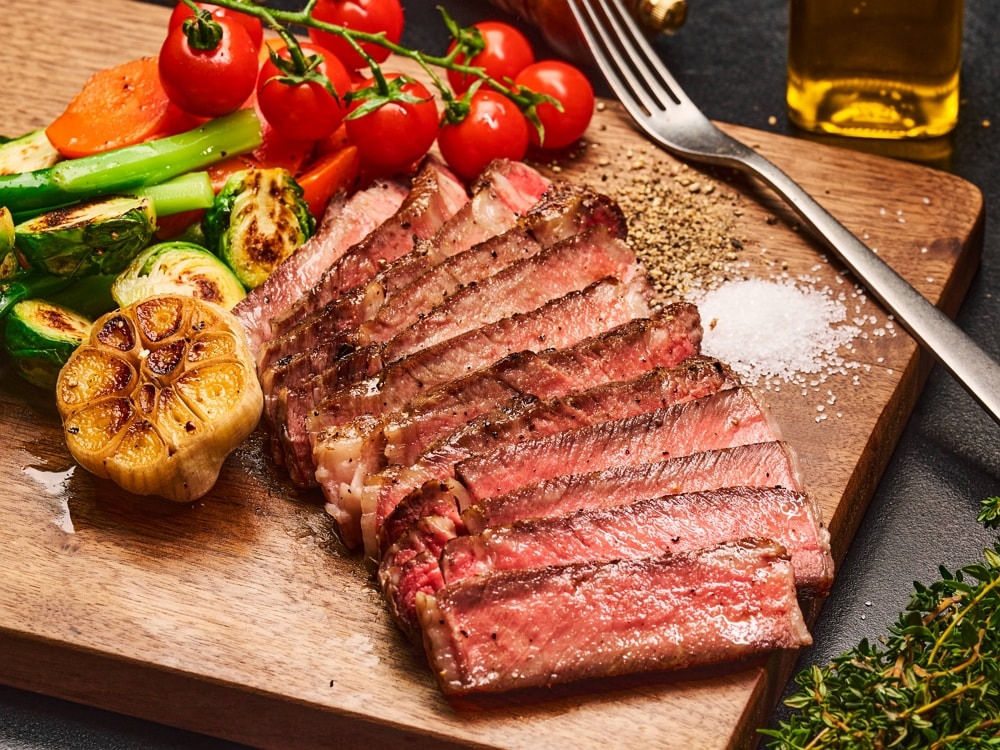
Get the sous vide steak recipe
When it comes to cooking sous vide meals, the one recipe everyone wants to perfect is steak. People want their costly piece of premium beef to cook to perfection but it is also one of the most difficult ones to achieve.
Contrary to popular belief, cooking sous vide steak is very easy. The perfect doneness of a sous vide steak is directly related to the temperature you set it. You just need to set your cooker’s temperature at 130°F (54°C), and you will get a perfectly cooked, medium-rare steak, irrespective of your experience level.
Seafoods
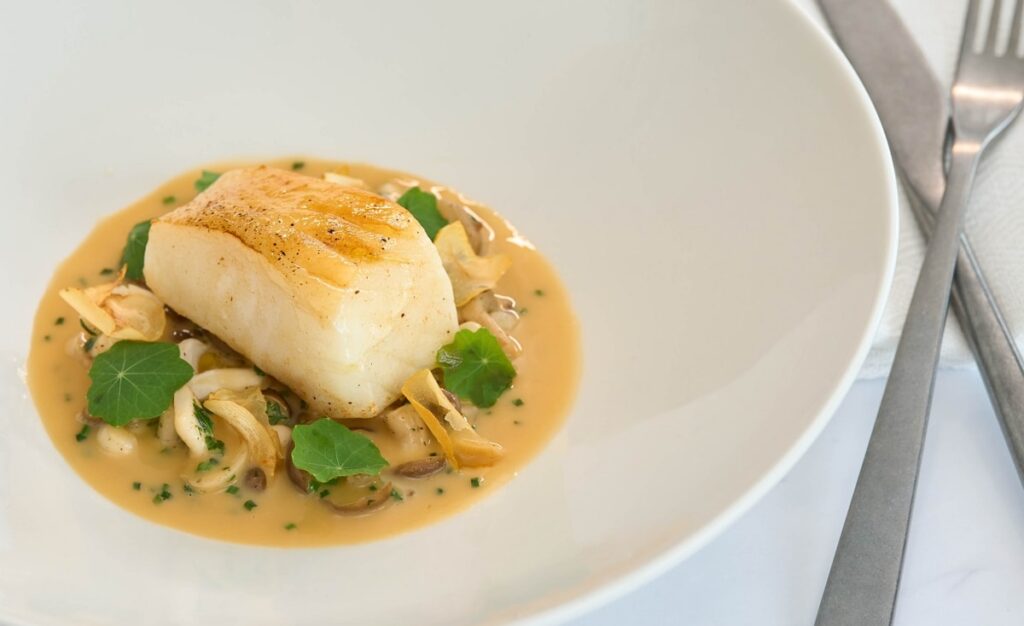
Get the sous vide cod recipe
Cod, a delicate and flaky fish, can be tricky to cook perfectly using traditional methods, often resulting in overcooked, dry pieces. But with sous vide cooking, achieving a tender, juicy cod fillet is a breeze.
For a perfectly cooked sous vide cod, set your sous vide cooker to 140°F (60°C), and in about 30-45 minutes, you’ll have a perfectly cooked piece of fish that’s tender and moist, with a delicate flake. Sous vide cooking allows the fish to retain all its natural flavors, while keeping its texture light and buttery.
Don’t forget to finish it off with a quick sear in a hot pan for a golden crust, or you can simply enjoy it straight from the sous vide bath. The result will be a cod dish that’s much more flavorful and tender than anything you’d get from traditional methods.
Carrots
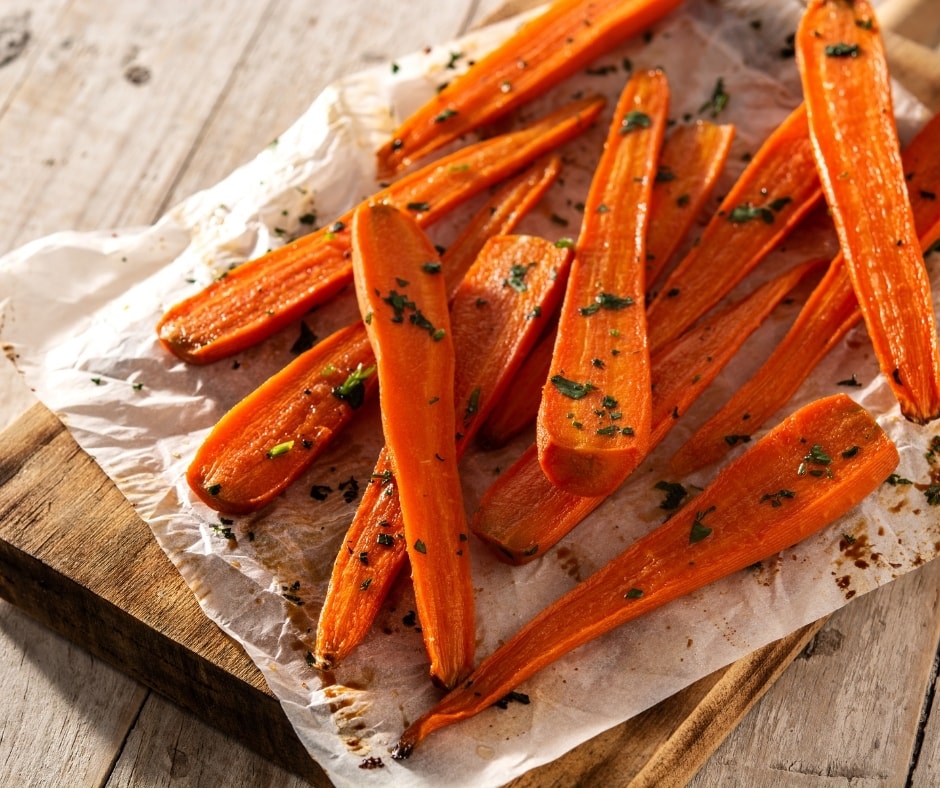
Get the sous vide carrots recipe
Take carrots, for example. Often relegated to side dishes and crudite platters, sous vide cooking unlocks their hidden potential, elevating them to star status.
Imagine this: tender, vibrantly orange carrots infused with herbs and spices, their sweetness intensified through the gentle magic of sous vide. Picture delicately arranging these gems, gleaming with culinary pride, atop a bed of fluffy quinoa or as a vibrant side to a succulent roast.
Isn’t that more enticing than the usual steamed or boiled counterparts? That’s the power of how to sous vide. It allows you to explore cooking methods in a whole new light, achieving perfect results every time.
Chicken Breast
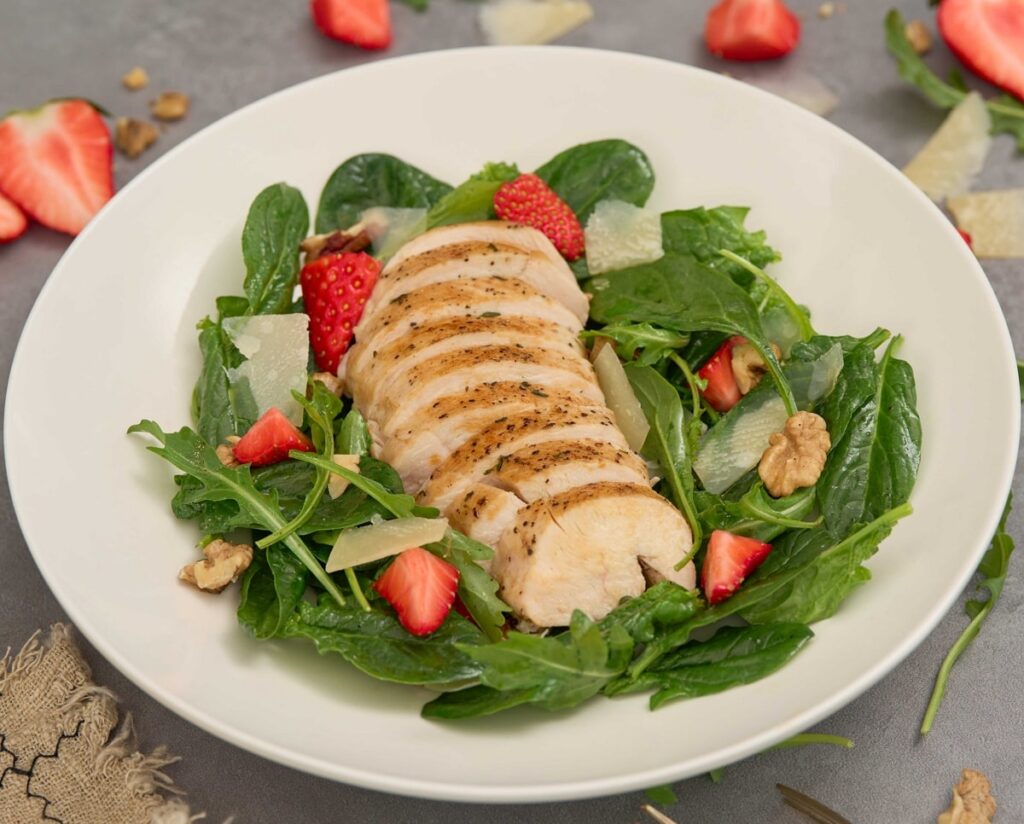
Get the sous vide chicken breast recipe
If you cook your chicken through conventional methods, there is a chance your chicken will turn out stringy and dry. The reason behind this is that the government-recommended temperature setting for safe-to-eat chicken is 165°F (74°C). If cooked below that temperature range, your chicken would be considered unsafe to consume. But the good thing with sous vide cooking is that you can safely lower the cooking temperatures to 140°F (60°C), without compromising its safety. What the sous vide method does is that it holds the above-mentioned temperature range for a longer period of time, which in turn pasteurizes the chicken, thus making it safe to eat.
For a different experience and a fragrant twist, try a sous vide rosemary chicken or experiment with spices and marinades. You will achieve consistently juicy and delicious outcomes every time. From classic sous vide recipes to your own culinary creations, the possibilities are endless.
Conclusion
Whether you’re a seasoned professional chef or just starting your cooking adventure, exploring how to sous vide offers an opportunity to take your meals to new heights, adding restaurant-quality finesse to your culinary adventures. Embracing how to sous vide isn’t just about adding a fancy culinary technique to your cooking expertise. It’s about embracing a new way of cooking. Give it a try and discover the delightful results for yourself.



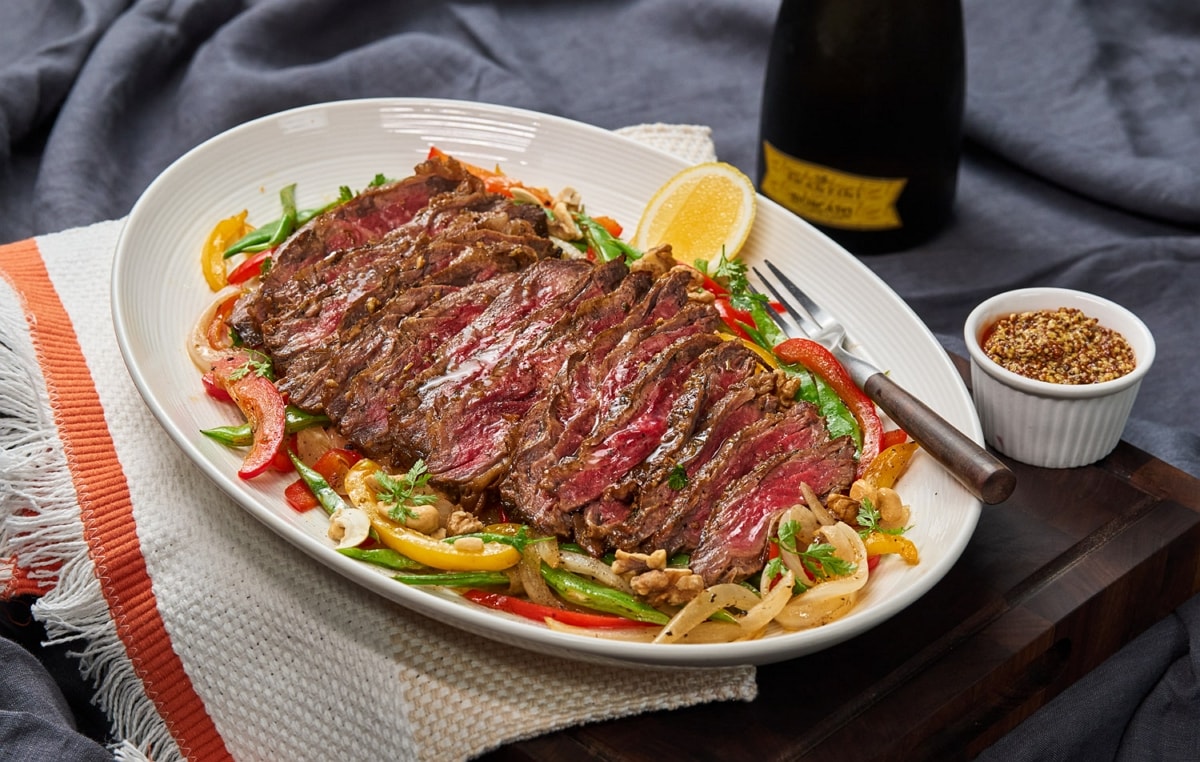
You’ve really covered all the bases in this post—thanks!
Very useful, I added it to my bookmark site list!
I just like the helpful information you provide in your articles
Helpful and well-paced. Looking forward to your next post.
Well-researched and balanced. Appreciate the effort behind this.
Useful tips and friendly tone — a winning combination. Thanks!
Please write more about the challenges you mentioned — curious for solutions.
Amazing breakdown — the numbered steps made it easy to follow.
This topic is so relevant right now. Thanks for the timely post.
Great mix of research and practical application. Very helpful.
Great topic and excellent execution. Subscribed for updates.
This post answered a question I’ve had for ages. Thank you!
Thank you for such a thorough and thoughtful article.